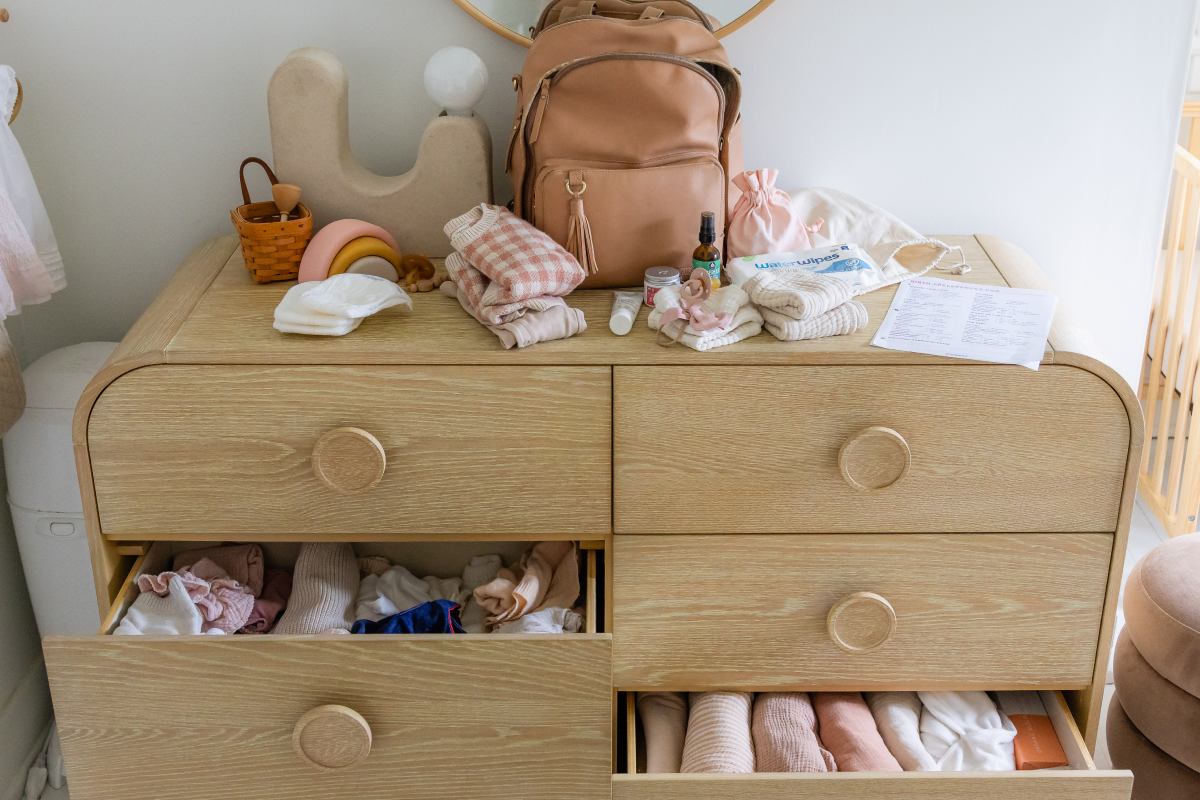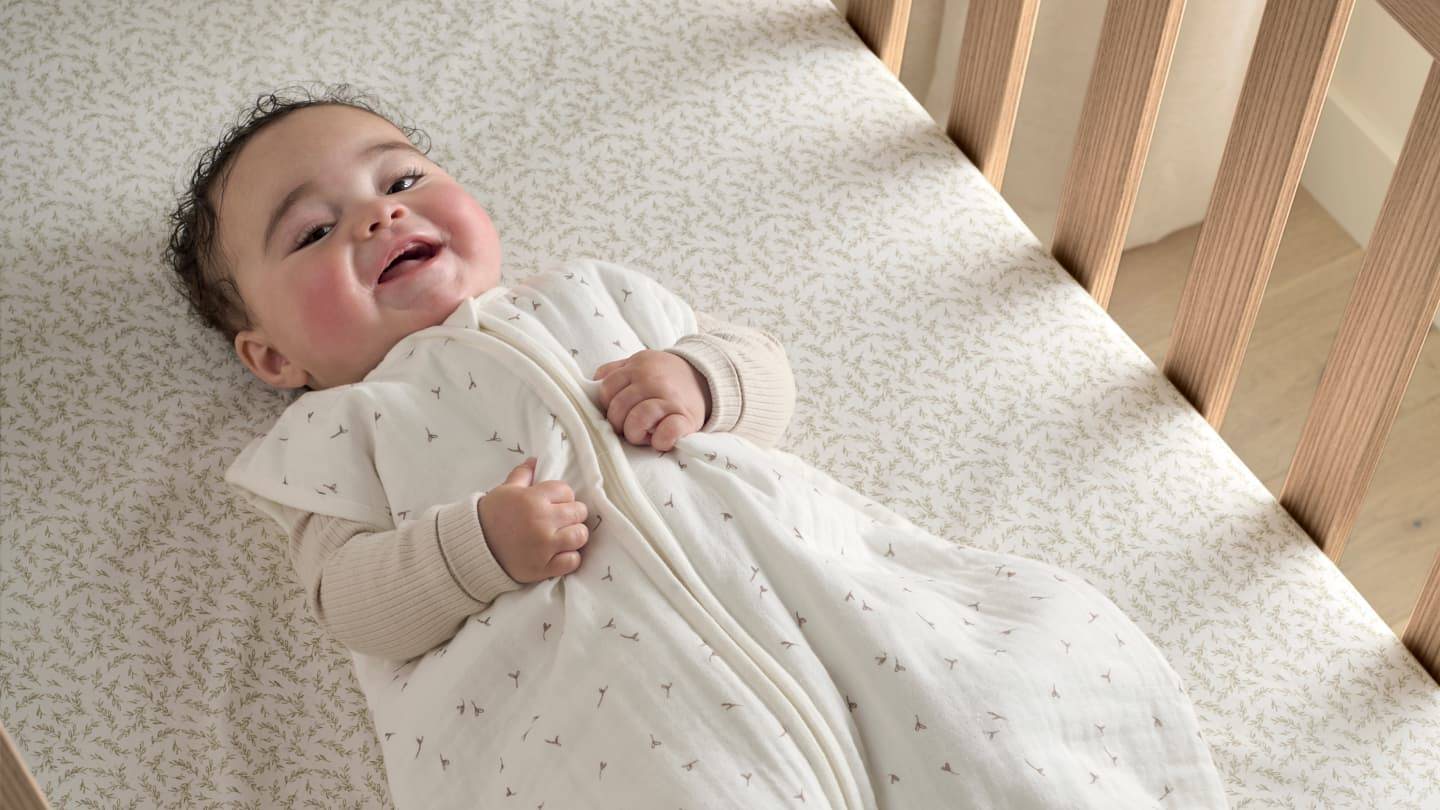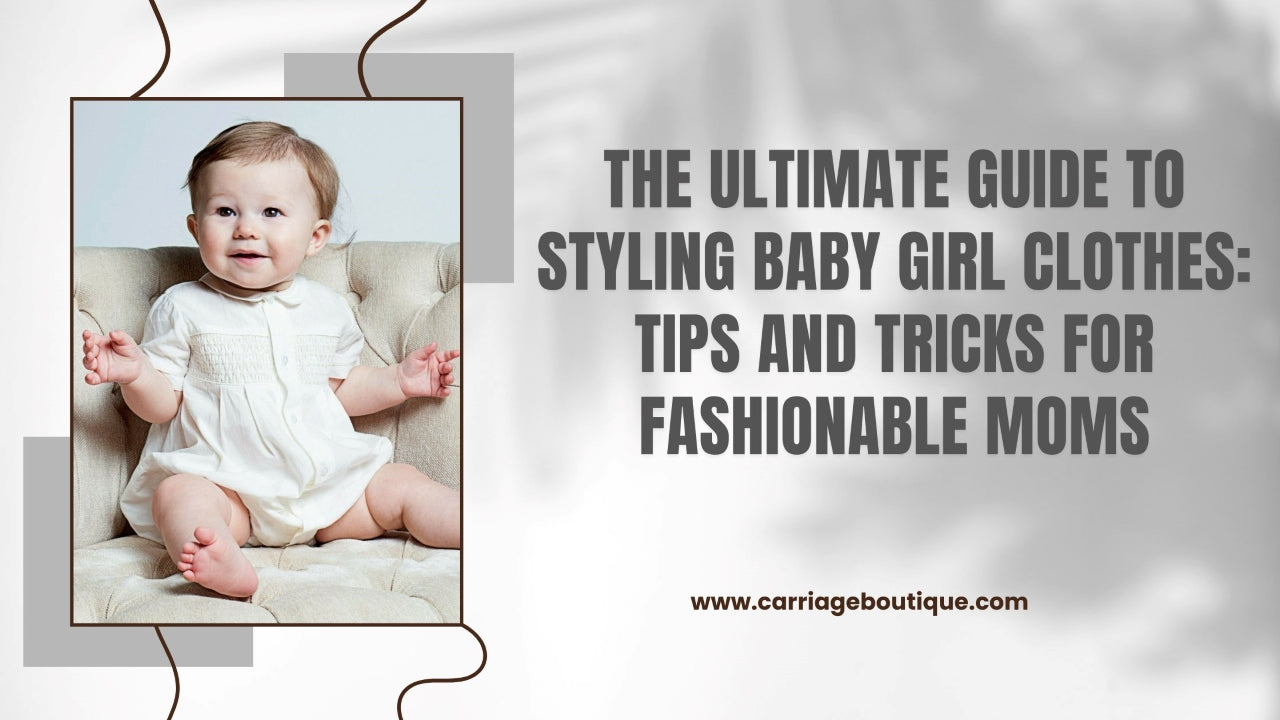As an Amazon Associate, I earn from qualifying purchases.
It’s important to consider factors like weather, laundry frequency, and personal preferences. How Many Newborn Clothes Do I Need tend to go through several outfit changes each day due to spit-ups and diaper leaks, so having around 6-8 outfits can ensure that you always have a clean one on hand.
It’s also a good idea to have a few different types of outfits, including onesies, sleepers, tops, and bottoms, to accommodate varying temperatures and activities. By keeping these factors in mind, you can confidently stock up on the right amount of clothes for your new arrival.
Choosing The Right Newborn Clothes
When it comes to preparing for the arrival of a new baby, choosing the right newborn clothes is a crucial task for soon-to-be parents. Not only do you want your little one to look adorable, but you also want to ensure they are comfortable and suited to the weather conditions they will be born into.
Seasonal Considerations
Selecting the appropriate newborn clothes based on the time of year your baby is due is essential. For warmer months, opt for lightweight and breathable fabrics to keep your little one cool and comfortable. On the other hand, for colder seasons, it’s best to invest in cozy layers such as onesies, footed pajamas, and hats to keep your baby warm and snug.
Soft And Comfortable Fabrics
Prioritizing soft and comfortable fabrics for your newborn’s clothing is important as their delicate skin is prone to irritation. Consider organic cotton, bamboo, or other natural fibers that are gentle on the baby’s skin. Avoid fabrics that may cause discomfort or allergies, such as synthetic materials or rough textures.

Credit: www.babylist.com
Essential Newborn Clothing Items
Welcome to our guide on newborn clothing essentials! As a new parent, it’s natural to feel overwhelmed by the vast array of cute and tiny clothes available for your little one. To help you navigate through this exciting time, we’ve compiled a list of must-have clothing items for your newborn. From onesies and bodysuits to sleepers and swaddles, let’s explore the essentials together.
Onesies And Bodysuits
Onesies and bodysuits are the backbone of your newborn’s wardrobe. These versatile pieces are perfect for everyday wear and come in a variety of styles, colors, and fabrics. Make sure to have an ample supply, as they tend to get messy quickly. Remember, comfort is key for your little one, so choose onesies and bodysuits that are soft and gentle on their delicate skin. Opt for designs with snap closures for easy diaper changes. Here’s a handy table to help you gauge the ideal quantity:
| Size | Quantity |
|---|---|
| Newborn | 6-8 |
| 0-3 months | 10-12 |
Sleepers And Swaddles
Sleepers and swaddles are bedtime essentials for newborns, providing warmth, comfort, and a sense of security. When choosing sleepers, opt for those with practical features such as zip or snap closures, as nighttime diaper changes can become frequent. Swaddles, on the other hand, help recreate the cozy feeling of being in the womb and can aid in promoting better sleep. It’s a good idea to have a few sleepers and swaddles on hand since babies can soil or spit up on them during the night. Consider the following quantities:
- Around 4-6 sleepers
- 2-3 swaddles
Hats And Socks
Protecting your newborn’s tiny head and feet is crucial, especially in colder weather. Hats and socks not only keep your little one warm but also prevent heat loss from their rapidly developing bodies. When it comes to hats, opt for soft and breathable materials like cotton or knit. As for socks, choose pairs that are comfortable, stay put, and do not constrict their tiny toes. Here’s a quick reference for the ideal quantity:
- 2-3 newborn hats
- 6-8 pairs of socks
Remember, these quantities are merely guidelines, and it’s always a good idea to have extras on hand for unexpected messes and laundry delays. By having the essential newborn clothing items readily available, you’ll be well-prepared to keep your little one comfortable and stylish from day one.
Sizing And Quantity Guidelines
Sizing and Quantity Guidelines:
Understanding Baby Sizes:
Before you start shopping for your little one’s wardrobe, it’s important to understand how baby clothing sizes work. Baby sizes are typically categorized by their weight, rather than their age, as every baby grows at their own pace. It’s best to consult the clothing brand’s size chart to ensure a perfect fit for your newborn. Here’s a breakdown of common baby clothing sizes:
| Size | Weight |
| Preemie | Up to 5 pounds |
| Newborn | 5 to 8 pounds |
| 0-3 months | 8 to 12 pounds |
| 3-6 months | 12 to 16 pounds |
| 6-9 months | 16 to 20 pounds |
| 9-12 months | 20 to 24 pounds |
Recommended Quantity per Size:
Now that you have a better understanding of baby sizes, you might be wondering how many clothes you need for each size. Keep in mind that newborns tend to go through several outfit changes each day due to diaper leaks and spit-ups. It’s always a good idea to stock up on essentials to avoid running out of clean clothes. Here’s a general guideline for the recommended quantity per size:
- Preemie: It’s best to have around 8-10 outfits for preemies, as they often require frequent diaper changes and are more prone to accidents.
- Newborn: Aim for 10-15 onesies, sleepers, and pants to rotate throughout the week. This allows sufficient time for laundry without running out of clean clothes.
- 0-3 months: Similar to newborn size, having 10-15 sets of clothes in this size range should be enough to keep your little one comfortable and clean.
- 3-6 months: As your baby grows, you can reduce the quantity to around 8-10 outfits for this size range.
- 6-9 months: Again, a minimum of 8-10 outfits is recommended to ensure your baby is dressed comfortably.
- 9-12 months: For this stage, having 8-10 outfits will be sufficient, but it’s always a good idea to have a few extra pieces for unexpected mishaps.
Remember that the number of clothes you need may also depend on your lifestyle and cleaning routine. If you prefer doing laundry more frequently or if you have easy access to washing facilities, you might need fewer clothes overall. On the other hand, if doing laundry is not as convenient for you, having more outfits on hand will be beneficial.

Credit: www.mamasandpapas.com
Tips For Organizing Baby Clothes
Curating a newborn wardrobe doesn’t have to be overwhelming. Consider getting 6-8 onesies and pajamas, 4-6 bodysuits, and 2-4 hats and mittens. Versatile pieces like 3-4 sleepers and 2-3 jackets will keep your little one cozy. As a tip, aim to have a few clothing items in larger sizes to accommodate the rapid growth during the first year.
Storage Solutions
When it comes to organizing baby clothes, having proper storage solutions is key. Here are some practical and space-saving tips to keep your little one’s wardrobe neat and accessible:
1. Invest in clear plastic storage bins: These bins are great for keeping your baby’s clothes sorted by size or type. Label each bin for easy identification.
2. Use hanging organizers: Hanging organizers with multiple compartments are perfect for storing smaller items like socks, hats, and accessories. Hang them in the closet or on the back of the nursery door.
3. Maximize drawer space: Use dividers to separate different clothing items within the drawers. This will help you find specific items quickly and efficiently.
4. Utilize under-bed storage: If you have limited closet space, consider using storage bins that can slide under the crib or bed. This is a great way to store out-of-season clothes or items your baby has outgrown.
Creating Functional Outfits
Creating functional outfits for your baby not only helps you make the most of your wardrobe but also saves time and eliminates unnecessary stress. Here are some tips to help you dress your little one effortlessly:
1. Separate clothes by purpose: Group together outfits suitable for different occasions, such as everyday wear, sleepwear, and special occasions. This way, you can easily grab the appropriate clothing when needed.
2. Pick versatile items: Choose clothes that can be mixed and matched with various pieces. This allows you to create different outfits using fewer items.
3. Organize outfits ahead of time: Plan your baby’s outfits for the week and place them in a designated space, such as a hanging organizer or labeled bins. This saves time in the morning and ensures your baby is dressed appropriately for the day.
Conclusion
Properly organizing your baby’s clothes not only keeps their wardrobe tidy but also makes it easier for you to find and select outfits. By implementing these storage solutions and creating functional outfits, you’ll be able to navigate your little one’s clothing collection with ease. Remember, a well-organized wardrobe means less stress and more time to enjoy precious moments with your baby.
Practical Considerations For Newborn Clothing
Choosing the right newborn clothes can be an exciting yet overwhelming task for new parents. With so many adorable options available, it’s important to consider practical factors that will make your life easier. In this article, we will explore two key practical considerations when it comes to newborn clothing: easy care and durability, as well as budget-friendly options.
Easy Care And Durability
When you have a newborn, you’ll quickly realize that time is of the essence. Between feeding, changing diapers, and soothing a fussy baby, the last thing you want to worry about is tricky garment care. That’s why choosing newborn clothes that are easy to care for is essential.
Opt for fabrics that can be easily machine-washed and dried without losing their shape or color. Organic cotton, for example, is not only soft and gentle on your baby’s delicate skin but also easy to maintain. Simply toss them into the washing machine, and they’ll come out looking as good as new. Avoid elaborate designs and excessive buttons or snaps, as they can become frustrating during diaper changes or late-night outfit changes.
Durability is another crucial factor to consider. Newborns grow at a rapid pace, and their clothes may need to withstand frequent washing and stretching. Look for reinforced seams and sturdy fabrics that can withstand wear and tear. Investing in high-quality garments can save you money in the long run, as they are less likely to shrink or fade after a few washes.
Budget-friendly Options
It’s no secret that raising a child can be expensive, and newborn clothing is no exception. Fortunately, there are plenty of budget-friendly options available that don’t compromise on quality or style. Here are a few ways to save while shopping for newborn clothes:
- Consider buying second-hand: Babies outgrow their clothes quickly, so purchasing gently used items can be a cost-effective solution. Look for consignment stores, online marketplaces, or community swap groups where you can find pre-loved newborn clothes at a fraction of the cost.
- Opt for multipurpose outfits: Look for garments that can be worn in multiple ways or have adjustable features to accommodate growth. This way, you can get more wear out of each item, reducing the need for buying additional pieces.
- Stick to the essentials: Focus on purchasing the essentials in the beginning, such as onesies, sleepers, and blankets. These versatile items will keep your little one comfortable and can be mixed and matched with other pieces as needed.
- Organize clothing swaps: Connect with other parents in your community or online groups to organize clothing swaps. This allows you to exchange gently used clothes that no longer fit your baby for ones that do, without spending a dime.
By considering these budget-friendly options, you can build a practical and affordable wardrobe for your newborn without breaking the bank.

Credit: carriageboutique.com
Frequently Asked Questions On How Many Newborn Clothes Do I Need
How Many Sets Of Newborn Clothes Do I Need?
It is recommended to have around 5 to 7 sets of newborn clothes. This allows for frequent changes due to spit-ups, diaper leaks, and messes. Having a few extras ensures that you won’t run out of clean clothes before laundry day.
What Sizes Should I Buy For Newborn Clothes?
When buying newborn clothes, it’s best to opt for sizes labeled as “0-3 months. ” This size range is suitable for most infants, providing a comfortable fit during the first few months. Avoid buying too many newborn-specific sizes as babies tend to outgrow them quickly.
How Many Onesies Should I Have For A Newborn?
It’s advisable to have around 8 to 10 onesies for a newborn. Onesies are versatile and can be worn alone or as a layering piece. This quantity allows for regular changes when needed without running out of clean onesies too quickly.
Conclusion
Determining the number of newborn clothes you need can be a bit overwhelming but following these guidelines can simplify the process. Take into account the climate, laundry frequency, and the number of outfits per day. Remember, babies grow quickly, so it’s better to have a few essentials and purchase more as needed.
By planning and being mindful of your baby’s needs, you’ll be well-prepared for their arrival. Happy parenting!
As an Amazon Associate, I earn from qualifying purchases.

